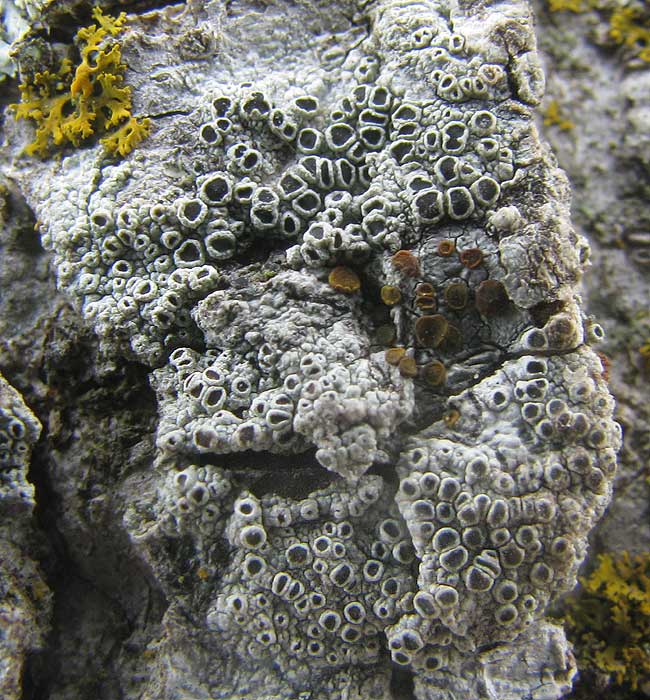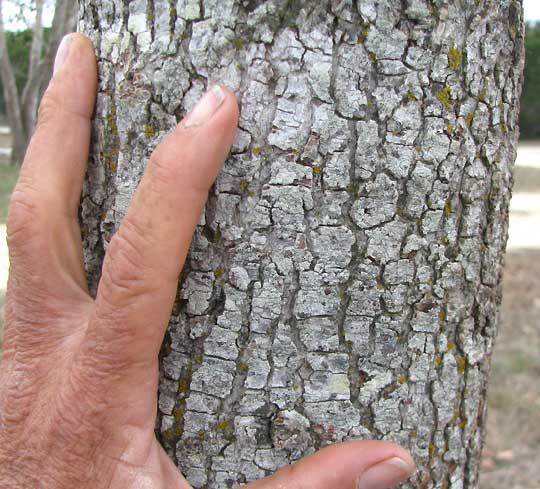Excerpts from Jim Conrad's
Naturalist Newsletter

from the February 17, 2013 Newsletter issued from the valley of the Dry Frio River in northern Uvalde County, southwestern Texas, on the southern border of the Edwards Plateau; elevation ~1750m (~5750 ft); N29.62°, W99.86°; USA
RIM LICHEN
Below you see the trunk of a little Sweetgum tree planted beside the cabin:

Sweetgum bark is described as gray or grayish, so anyone can be forgiven for assuming that the picture actually shows gray Sweetgum bark. However, if you look very closely at just a single flat, finger-wide plate of the trunk's irregularly fissured bark you see what's shown at the top of this page.
In recent Newsletters featuring this area's lichens we've seen bowl-like structures such as those, recognizing them as apothecia, which are structures producing spores of the fungus component of the lichen -- and of course lichens are composite organisms consisting of a fungus mingled with a species of alga and/or cyanobacterium. An important difference between the apothecia we've looked at earlier and the ones in the picture is that the ones in the picture are much smaller. Apothecia can be the size of a postage stamp or larger, but the ones in the picture are no larger than 1mm across (1/32nd inch) and most are much smaller.
So, our first picture of the little Sweetgum's bark doesn't really show bark, but rather the trunk's encrustation of grayish lichen.
Using the "Dynamic Key" linked to at http://lichenportal.org and referring to pictures on the Internet, it seems that our Sweetgum-bark-encrusting lichen may be LECANORA CHLAROTERA, sometimes known by the English name of Rim Lichen. The species is "subcosmopolitan," meaning that it's found nearly worldwide but missing in some places. It's noted in Africa, Asia, Europe, and North and South America. In the US it seems to occur mainly if not exclusively in the southern half of the country, coast to coast.
Some lichens occur only on rocks, others on the ground and some in other places, but Rim Lichen lives on tree bark, especially "nutrient rich" tree bark. With Sweetgum wood so famously resiny, it's easy to believe that its bark contains enough nutrients to make any bark-loving lichen happy.
One ecological service this little lichen provides is the important one of its algal cells producing oxygen during photosynthesis, in a location -- dead tree bark -- where otherwise little would be going on benefiting the entire ecosystem.